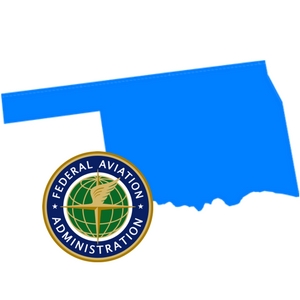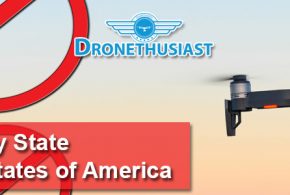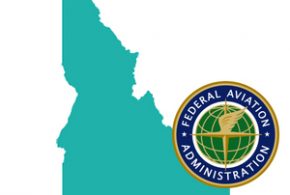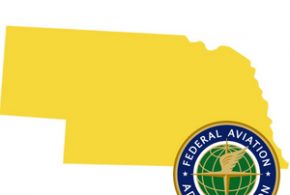Drone Laws in Oklahoma

Paying attention to everything the FAA has put forth since their rules and regulations were initially put into full effect is crucial for all drone fliers. Although, do you know the laws and regulations related to drones in your state, as well?
Flying Over Oklahoma
Do you guys remember the guy who shot a drone straight out of the sky? Well, Oklahoma is pretty strict when it comes to flying a drone, especially because of their new law, which you can read more about if you scroll down.
Oklahoma is a gorgeous state. With so much to see and do, it’s no wonder you want to bring your drone along to capture all the best moments possible!
Fliers beware, flying your drone over anything with a fence is a big no-no. As a general rule of thumb, if you can’t physically walk into an area because of bars or fences, your drone going over them is illegal. Check your FAA apps, make sure the skies are clear, and hope your spot is one you won’t be bothered at!

The Registering Process in Oklahoma

The Federal Aviation Administration (FAA) requires that all Small Unmanned Aircraft Systems (UAS) owners follow strict regulations and laws. You will need to file your name, home address and your email address as a start.
From there, you will receive a Certificate of Aircraft Registration and Proof of Ownership. These will include an identification number for your aircraft. You must have this number displayed on your drone at all times. The number will be valid for up to 3 years.
All aircraft that weighs more than 0.55 pounds, or 250 grams, and less than 55 pounds, or 25 kilograms, must be registered. This also includes any added payloads, such as an onboard camera.
You must be at least 13-years-old in order to register and, effective December 21st, 2015, all newly purchased or made drones must be registered before their first flight. You are able to register through a paper-based process, but you can also do so online by clicking here.
Proximity to Airports in Oklahoma
As a general rule of thumb, and in accordance with the law from the FAA, you may not fly within a 5-mile radius of any airport. In 2012 the FAA enacted the Modernization and Reauthorization Act which requires hobbyist drone operators, meaning residential, to contact air traffic control and/or airport management if they are operating within a 5-mile radius of any local airport.

This is enacted nationwide, not only in Oklahoma, under Part 101 of the Act, being Special Rule for Model Aircraft, to ensure that drone operations under unsafe conditions are disapproved before the drone can be launched.
Regardless of the local airport you will be flying near, and possibly breaching airspace, you will need to contact either the airport air traffic control tower or the airport operator.
You will need to establish an agreed-upon operating procedure with airport air traffic or the airport operator and answer a couple of questions. For example, questions relating to how long you are going to be flying for.
Unique Drone Laws in Oklahoma
At this time of writing, all of the legal information listed below is deemed as accurate as possible and fully in effect.
HB No. 2599 – Critical Infrastructure
An Act relating to unmanned aircraft; defining terms; prohibiting operation of an unmanned aircraft over a critical infrastructure facility; excepting conduct of specified entities or persons; prescribing punishment for violation; providing for codification; and providing an effective date.
Subject: Unmanned aircraft
BE IT ENACTED BY THE PEOPLE OF THE STATE OF OKLAHOMA:
SECTION 1.
As used in this section:
“Critical infrastructure facility” means;
One of the following, if completely enclosed by a fence or other physical barrier that is obviously designed to exclude intruders, or if clearly marked with a sign or signs that are posted on the property, are reasonably likely to come to the attention of intruders, and indicate that entry is forbidden or flight of unmanned aircraft without site authorization is forbidden:
A petroleum or alumina refinery,
An electrical power generating facility, substation, switching station or electrical control center,
A chemical, polymer or rubber manufacturing facility,
A water intake structure, water treatment facility, wastewater treatment plant or pump station,
A natural gas compressor station,
A liquid natural gas terminal or storage facility,
A telecommunications central switching office,
Wireless telecommunications infrastructure including cell towers,
A port, railroad switching yard, trucking terminal or other freight transportation facility,
A gas processing plant, including a plant used in the processing, treatment or fractionation of natural gas or natural gas liquids,
A transmission facility used by a federally licensed radio or television station,
A steelmaking facility that uses an electric arc furnace to make steel,
A facility identified and regulated by the United States Department of Homeland Security Chemical Facility Anti-Terrorism Standards (CFATS) program,
A dam that is regulated by the state or federal government, or a natural gas distribution utility facility, including, but not limited to, pipeline interconnections, a city gate or town border station, metering station, aboveground piping, a regulator station and a natural gas storage facility, or
B. Any aboveground portion of an oil, gas, hazardous liquid or chemical pipeline that is enclosed by a fence or other physical barrier that is obviously designed to exclude intruders;
“Dam” means any barrier, including any appurtenant structures, that is constructed for the purpose of permanently or temporarily impounding water; and
“Unmanned aircraft” means an aircraft without occupants that is flown by a pilot via a ground control system or autonomously through use of an onboard computer and other additional equipment necessary to operate the aircraft and includes unmanned aircraft commonly called drones.
B. Except as provided in subsection C of this section, a person shall not intentionally or knowingly:
Operator an unmanned aircraft over a critical infrastructure facility if the unmanned aircraft is less than four hundred (400) feet above ground level;
Allow an unmanned aircraft to make contact with a critical infrastructure facility, including any person or object on the premises of or within the facility; or
Allow an unmanned aircraft to come within a distance of a critical infrastructure facility that is close enough to interfere with the operations of or cause a disturbance to the facility.
C. This section shall not apply to conduct committed by:
The federal government, the state or a political subdivision of the state;
A person under contract with or otherwise acting under the direction or on behalf of the federal government, the state or a political subdivision of the state;
A law enforcement agency;
A person under contract with or otherwise acting under the direction or on behalf of law enforcement agency;
An owner or operator of the critical infrastructure facility;
A person under contract with or otherwise acting under the direction or on behalf of an owner or operator of the critical infrastructure facility;
A person who has the prior written consent of the owner or operator of the critical infrastructure facility;
The owner or occupant of the property on which the critical infrastructure facility is located or a person who has the prior written consent of the owner or occupant of that property; or
An operator of an unmanned aircraft that is being used for a commercial purpose, if the operator is authorized by the Federal Aviation Administration to conduct operations over that airspace.
D. Any person in violation of this section may be civilly liable for damages to the critical infrastructure facility to include, but not be limited to, damage to property, the environment or human health.
Other Legal Issues With Drones in Oklahoma
At this time of writing, there are currently a number of bills in circulation within the state of Kentucky surrounding drones.
SB No.492 – Shooting Drones Down
BE IT ENACTED BY THE PEOPLE OF THE STATE OF OKLAHOMA:
SECTION 1. NEW LAW A new section of law to be codified in the Oklahoma Statutes as Section 111 or Title 76, unless there is created a duplication in numbering, reads as follows:
As used in this section:
“Drone” means a powered, aerial vehicle that carries or is equipped with a recording device that does not carry a human operator, uses aerodynamic forces to provide vehicle lift, and can fly autonomously or be piloted remotely. A drone may be expendable or recoverable.
B. Any person owning or controlling real estate or other premises who voluntarily damages or destroys a drone located on the real estate or premises or within the airspace of the premises not otherwise regulated by the Federal Aviation Administration, shall, together with any successors in interest, if any, not be civilly liable for causing the damage or destruction to the property of such person.
HB 2591 – Labeled Information
AS INTRODUCED
An Act relating to unmanned aircraft; defining unmanned aircraft; requiring owner’s contact information to be permanently affixed to an unmanned aircraft; describing display methods; providing exception for unmanned aircraft registered with the Federal Aviation Administration; defining unmanned aircraft; prohibiting operation of unmanned aircraft over private property below specified altitude; providing exceptions; prescribing punishment for violation; providing for codification; and providing an effective date.
BE IT ENACTED BY THE PEOPLE OF THE STATE OF OKLAHOMA
SECTION 1. NEW LAW A new section of law to be codified in the Oklahoma Statues as Section 290 or Title 3, unless there is created duplication in numbering, reads as follows:
As used in this section, “unmanned aircraft” means an aircraft without occupants that is flown by a pilot via a ground control system or autonomously through use of an onboard computer, communication links and other additional equipment necessary to operate the aircraft and includes unmanned aircraft commonly called drones.
B. Except as provided in subsection C of this section, all unmanned aircraft operated within the state shall have identifying contact information, including the name, physical address and telephone number of the unmanned aircraft operator, visibly displayed on the outside of the unmanned aircraft. The contact information shall be permanently affixed to the aircraft through an engraving, permanent label, permanent marker or paint.
C. Unmanned aircraft that are registered with the Federal Aviation Administration’s Unmanned Aircraft System (UAS) registry and assigned a registration number shall not be required to display the contact information listed in subsection B of this section if the unmanned aircraft is properly labeled with the federal registration number.
SECTION 2. NEW LAW A new section of law to be codified in the Oklahoma Statutes as Section 320 or Title 3, unless there is created duplication in numbering, reads as follows:
As used in this section, “unmanned aircraft” means an aircraft without occupants that is flown by a pilot via a ground control system or autonomously through use of an onboard computer communication links and other additional equipment necessary to operate the aircraft and includes unmanned aircraft commonly called drones.
B. Except as a provided in subsection C of this section, a person shall not intentionally or knowingly operate an unmanned aircraft over private property of author at an altitude of less than one thousand three hundred twenty (1,320) feet above ground level.
C. This section shall not apply to conduct committed by:
The federal government, the state or a political subdivision of the state;
A person under contract with or otherwise acting under the direction or on behalf of the federal government, the state or a political subdivision of the state;
A law enforcement agency;
A person under contract with or otherwise acting under the direction or on behalf of a law enforcement agency; or
A person who has the prior written consent of the property owner or legal tenant of the property.
D. Any violation of this section shall be a misdemeanor punishable upon conviction by a fine of not more than five hundred dollars ($500.00) or by imprisonment in the county jail not to exceed one (1) year, or by both such fine and imprisonment.
FAQ on Oklahoma Law and Drones

If you do not see your question, or an answer to it, listed below, feel free to get in touch with us and we’ll gladly give you one.
Is a drone/UAS considered the same as a model aircraft?
The United States Congress has defined and concluded that a model aircraft is only considered a drone or a UAS when the following points are met:
- It’s flown for recreational purposes or as a hobby and not for any business or commercial reasons
- It’s flown within visible distance, meaning being able to see it at all times, of the individual operating it
- It’s capable of sustaining flight within the atmosphere, meaning that it can fly
If your model aircraft, regardless of whether or not you acquired it pre-built or built it yourself, meets the above points to your knowledge, it’s considered a drone/UAS.
What is the Small UAS Rule?
The Small UAS Rule requires those who have unmanned aircraft systems, or UAS, that weigh less than 55 pounds, payload included, to register their aircraft with the FAA. This only applies to recreational or hobby fliers and not commercial drone use, however.
Is the FAA’s Small UAS Rule still in effect?
Yes, it has been in effect from August 29th of 2016 and is still in effect at this time of writing.
Do I have to carry my Certificate of Aircraft Registration while flying my UAS at all times?
Yes, you must have the registration certificate from the FAA at all times during flight operation. In accordance with federal law, all UAS operators must show their certificate of registration to any local, state, or federal law enforcement officer when they are asked to do so.
What do I do for registration if my UAS is over the 55-pound limit?
If your UAS weighs more than 55 pounds, including payload, you will need to register it by clicking here.

Drone Laws in Oklahoma
Knowing the laws, regulations, restrictions, etc., regarding drones in your state is extremely important. Remember to educate yourself, follow the rules, fly safely and responsibly, and have fun!







If your being sirvalance by law enforcement do you not have any right as far as how far or where they can go
How about nosey neighbors, or someone wanting to see your children or wife naked?
Being an avid drone flyer I think there is more of a chance someone with a telescope would do that over a drone. The advantage point from 300ft above isn’t the best angle at all. On my experience, if I’m over your property it’s so I can get a better photo of a property beside yours. So the drone over the neighbors house is more likely to have the best angle. I photograph property and large items from that height. Furthermore I’m not sure this article would hold up in federal court under FAA guidelines too.